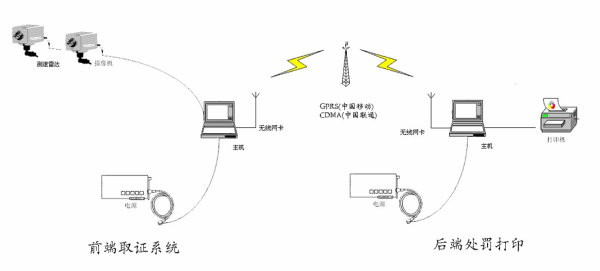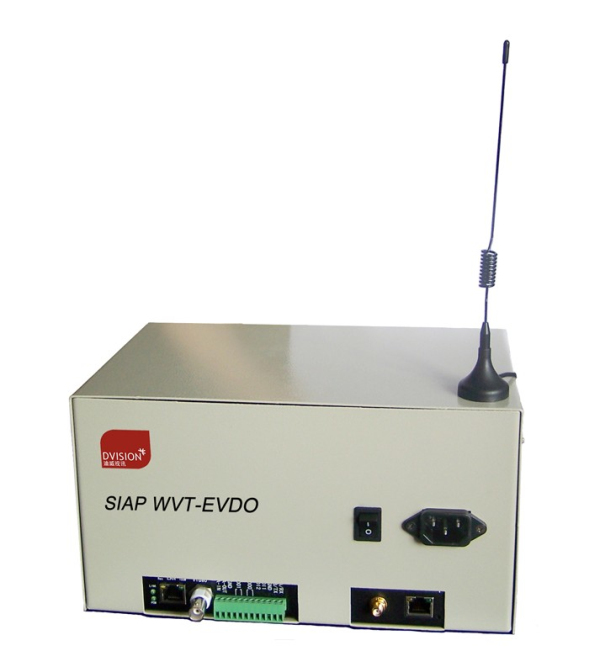With the rapid development of China's economy and the acceleration of urbanization, the urban population and vehicles have increased rapidly, resulting in the continuous increase of urban traffic flow, frequent accidents, violations of regulations and congestion. How to use modern technology to scientifically and reasonably organize transportation, develop intelligent transportation systems, maximize the potential of existing transportation facilities, improve the modernization level of urban traffic operation management and the overall operational efficiency of the system, curb traffic violations, combat vehicle-related crimes, and ensure traffic Safety, reducing traffic delays and improving transportation efficiency are new demands for urban intelligent transportation.
Since the 1980s, computer technology, electronic technology, and communication technology have developed tremendously, using these technologies to closely integrate vehicles, transportation facilities, drivers, citizens, and traffic managers to form a timely, accurate, and accurate An efficient intelligent transportation system (ITS) is an effective way to solve urban traffic.
2. Intelligent transportation system design of 3G technology
2.1 Proposal
By applying 3G mobile communication technology to the intelligent transportation system, the 3G wireless local area network is formed by the rapidly developing 3G mobile communication network to realize the picture, video and control information of the signal points of the front-end traffic intersection. The system integrates intelligent image processing and recognition technology, intelligent control technology, digital image transmission technology, digital image compression codec technology and 3G network communication technology to realize real-time transmission of captured images and images in traffic monitoring scenes. And main functions such as remote control of images.
In China's large and medium-sized cities, there are many traffic intersections, traffic flow is large, and violations are frequent. The intelligent transportation system based on 3G communication technology can play a great role in monitoring, troubleshooting and attacking traffic violations.
2.2 Application of 3G network technology
3G (3rd Generation) refers to the third generation mobile communication technology. Compared with the previous two generations of systems, the main feature of the third generation mobile communication system is that it can provide rich and colorful mobile multimedia services, and its transmission rate supports 144 kb in high-speed mobile environment. /s, supports 384kb/s in a slow mobile environment and 2Mb/s in a static state. The design goal is to provide greater system capacity, better communication quality than the second generation system, and to achieve seamless roaming and provide users with voice, data and multimedia on a global scale. A variety of services, but also consider the good compatibility with existing second-generation systems.
At present, there are three types of 3G standards accepted by ITU: WCDMA, CDMA2000 and TD-SCDMA. CDMA is an abbreviation of Code Division Multiple Access, which is the technical basis of the third generation mobile communication system. The CDMA system shows great development potential due to its simple frequency planning, large system capacity, high frequency reuse coefficient, strong anti-multipath capability, good communication quality, soft capacity and soft handover.
3. 3G-based intelligent transportation system application
3.1 Wireless electronic police, monitoring system
3.1.1 The main components of the system
The wireless electronic police and monitoring system based on 3G communication technology is mainly composed of a 3G data communication link, a monitoring center and a plurality of front ends. The 3G data communication link uses the standard TCP/IP protocol and can be run directly on the internal WLAN of the management department. The captured image, identification information, and video signal of the front camera are transmitted to the monitoring center through the 3G data transmission module. The system can configure different peripheral hardware devices according to the site conditions and user needs. The monitoring front-end uses system peripherals such as camera, front-end host, 3G data transmission module, digital decoder, high-speed pan/tilt and variable lens to complete the real-time transmission and front-end image monitoring of the front-end vehicle capture identification information required by the monitoring center. The monitoring center uses system peripherals such as identification server, background center software, main console, 3G wireless router, main switch, video server, and video wall. Specifically, it can be flexibly configured according to user requirements.
3.1.2 Main functions of the system
Real-time: Real-time processing of front-end video and capture identification data, such as real-time compression, decompression, transmission, etc.
Distribution: Live image acquisition, sending host and image receiving display host located in different locations, transmitting data through 3G network.
Synchronization: Although the video information is distributed, the video and pictures are synchronized when displayed on the user terminal.
The system can form a multi-level system, and the monitoring center can also form a multi-level traffic monitoring system by cascading to expand the traffic monitoring range and system capacity. The monitoring host transmits the collected images and picture information to the server in real time and broadcasts it to the outside through the server. The related customers can monitor and view in real time by simply opening the webpage through the browser.
3.2 Mobile inspection and inspection system
3.2.1 The main components of the system
The mobile electronic police system (vehicle speedometer) is mainly composed of a camera, a video capture card, a control host, a wireless communication device, and related software.

(Transaction diagram of mobile check system)
3.2.2 Main functions of the system
License plate recognition function: The system can automatically identify the number plate and number plate of the passing vehicle. When the police car is patrolling or fixed, the system will identify the passing vehicle number plate in real time, compare the “blacklist†database, report the vehicle status, and voice alarm prompt. The cause of the alarm is listed in detail.
Automatic speed measurement function: Use radar speedometer to automatically retrieve whether the vehicle is overspeed. When patrolling the passing vehicle, if there is overspeed of the vehicle, it will immediately sound alarm, automatically capture and identify, and automatically retrieve the database data to obtain the vehicle information.
Manually capture the violations: While inspecting passing vehicles, if you encounter vehicles that are driving in reverse, occupying bus lanes, red lights, etc., you can start capture or video recording. Click once to capture an account when capturing, and click once to record. Pre-image with historical recall
File Query Function: The system can query the identified vehicles for files, and can query the basic registration files, violation history, check the car status, whether to steal the vehicle, whether the traffic accident escapes the vehicle, and so on.
Wireless communication function: The system is equipped with 3G wireless communication module, which can transmit the front-end data to the command center in real time through 3G network, which is convenient for information query and management.
Central management software: The system has functions such as classification, statistics, query, report, summary, analysis, etc. of illegal data, and data exchange with the vehicle management office, and output reports in various electronic document formats, providing various ways to print various reports. And violation notice.
3.3 WVT-EVDO mobile wireless image transmission system

The Dewey WVT-EVDO mobile wireless image transmission system is suitable for on-site processing and control of daily patrols, unexpected events or other special situations through the vehicle. The scene needs to be transmitted back to the command center in real time and quickly, and the location of the incident is usually uncertain. The on-board real-time monitoring system exerts strong technical advantages and flexible response capabilities, and the scene is transmitted back to the command center in time through wireless video technology. It is convenient for remote command and dispatch, which can greatly shorten the reaction time and facilitate the rapid remote dispatching of command.
System workflow
Start 3G car wireless video terminal (including camera), the device automatically runs according to the set parameters, video capture through the camera, and compression coding locally, and connect 3G wireless network to establish data link. The video transmission device transmits the encoded video information to the video management server of the monitoring center in real time through the 3G wireless link, and the video management server listens to the video processing program to re-synthesize the received video information, and publishes the video in real time through the publishing program. Users can watch live video using the client software based on their permissions.
System application range
a. Administrative law enforcement: In the process of daily patrol and administrative law enforcement, the actual situation of the site is transmitted to the monitoring and command center in real time through the vehicle video system.
b. Unexpected events: When an emergency occurs, the vehicle will arrive at the scene and pass the on-board video system to transmit the actual situation to the monitoring and command center.
c. Local command: The commander in the vehicle conducts the command on the scene through the in-vehicle voice broadcast according to the monitoring of the car video system.
d. Remote command: Real-time monitoring of the scene around the patrol through the car video system, and the monitoring command center conducts remote monitoring management and command according to the site conditions.
4, summary
The 3G communication network solves the problems of the location of the front-end monitoring points and the difficulty of field wiring, and provides a new choice for the intelligent transportation system networking.
The intelligent transportation system based on 3G communication technology solves the problems in the data transmission of intelligent transportation system. The development of 3G technology brings unlimited opportunities to the information transmission of intelligent transportation, and there will be a broader application space in the future.
Distribution pole is a tall structure, usually made of wood, metal or concrete, that is used to support wires and equipment that power homes and businesses. Distribution poles are often located along streets and in residential areas to provide electricity to nearby buildings. They are commonly used in high-voltage cable systems to deliver electricity from substations to customers.
Distribution Pole,Metal Electric Mast Pole,Electrical Temp Pole,Power Transmission Poles
JIANGSU HONGGUANG STEEL POLE CO., LTD. , https://www1.hgsteelpole.com